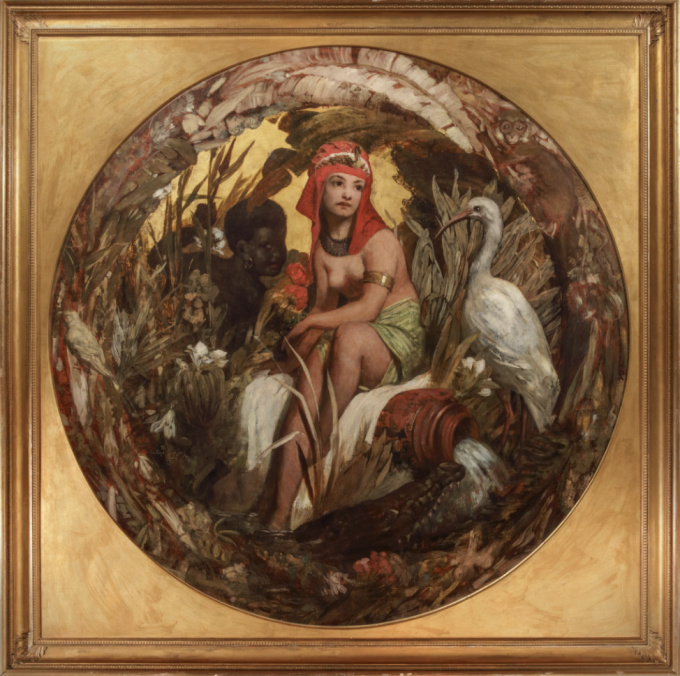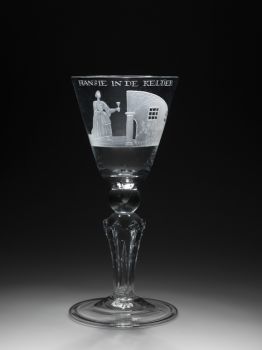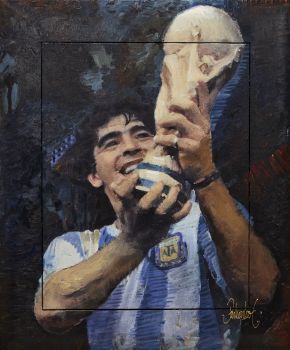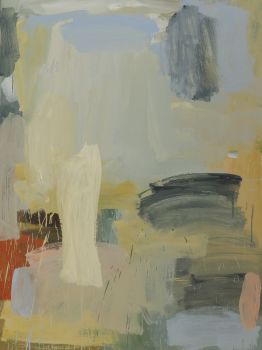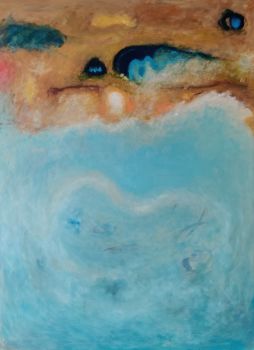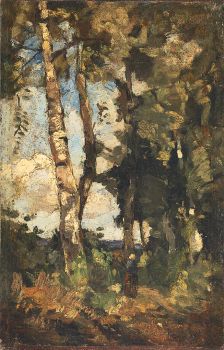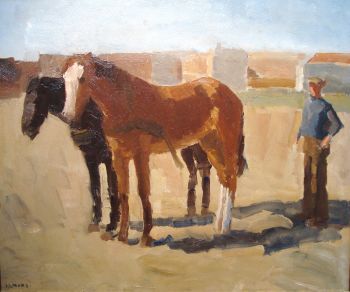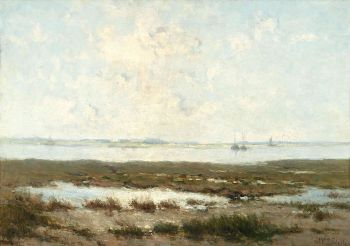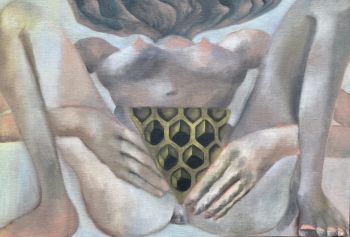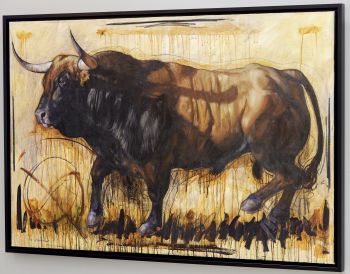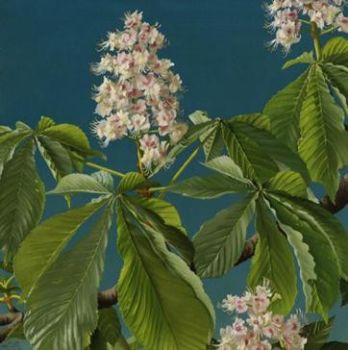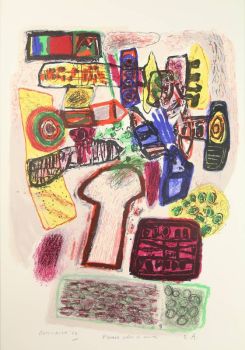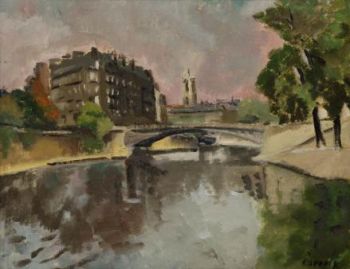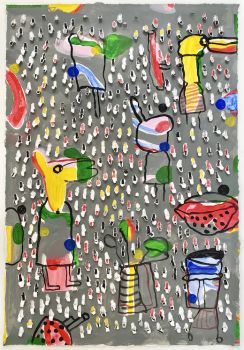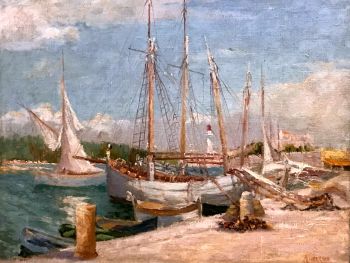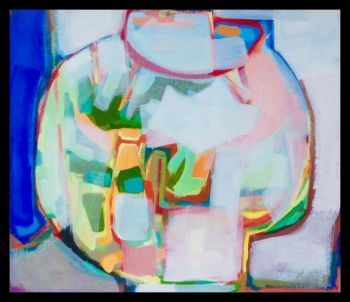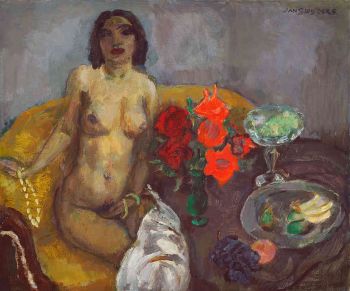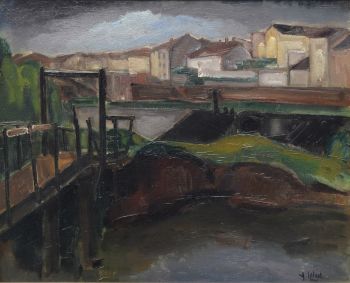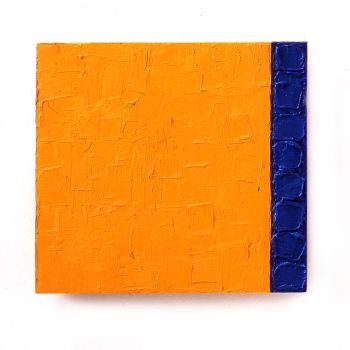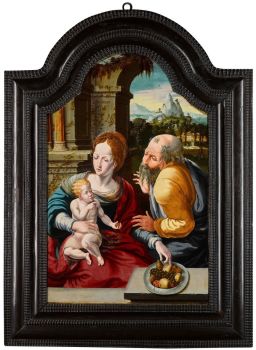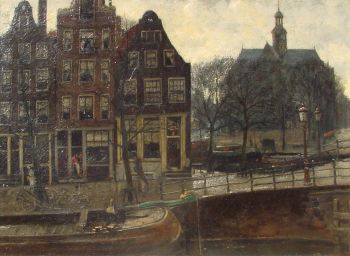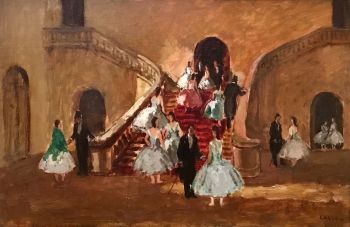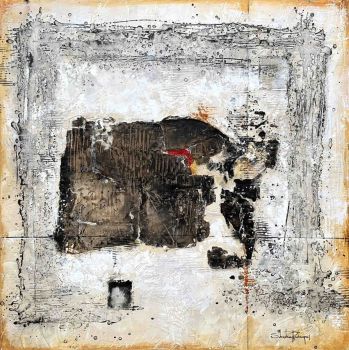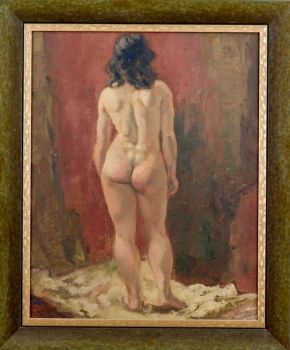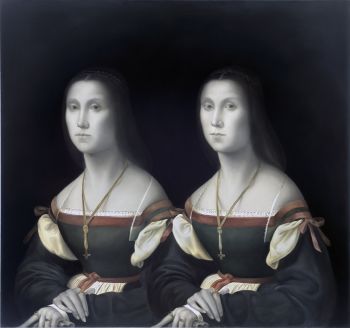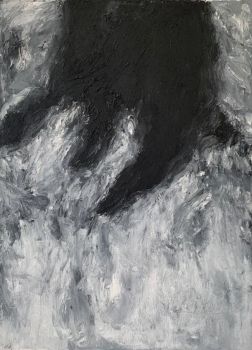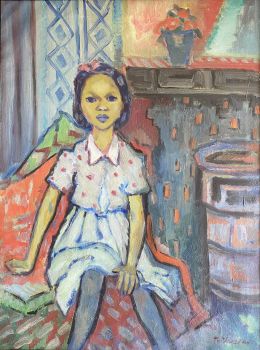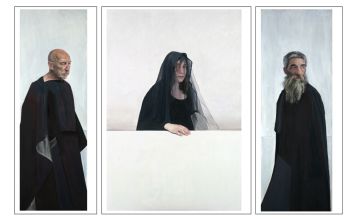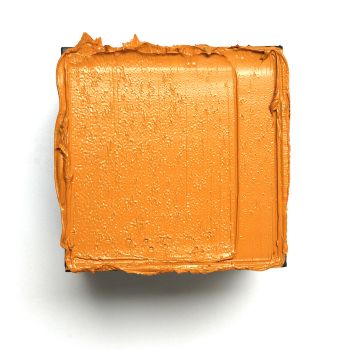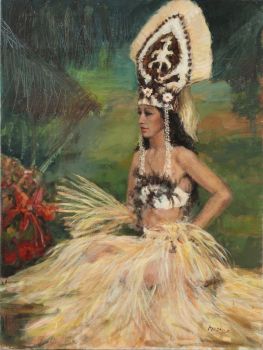‘Allegories of Africa and America’ 1872
Eduard Charlemont
LienzoPintura de aceitePintura
153 ⨯ 153 cm
Precio a consultar
Zebregs & Röell - Fine Art - Antiques
- Sobre la obra de arteAllegory of Africa, signed and dated Ed. Charlemont 1872 lower left
Oil on canvas, H. 153 x W. 153 cm (each tondo)
Eduard Charlemont (1848, Vienna) was a distinguished painter. He was born in an artistic family. His father Matthias Adolf Charlemont (1820-1871) was a well-known miniature painter, his brother Hugo Charlemont (1850-1939) an impressionist landscape painter and brother Theodor Charlemont (1859-1938) a sculptor. Eduard Charlemont made name for himself only at the age of fifteen when he exhibited his works for the first time at the Academy of Fine Arts in Vienna, where he also studied. He exhibited for the first time at the Paris Salon in 1878, where he won his first prize. Charlemont was called into Hans Makarts (1840-1884) studio, who by that time was a leading figure in the artworld of Vienna and an artist luminary of the Vienna Ringstrasse era.
Charlemont developed a new and unique style based on the ‘Neo-Baroque’ style of Makart, a crossing from 16th century Venetian paintings and French Rococo painters from the 18th century. His penchant for idyllic, playful compositions, characterized by elegance, showed up as a recurring constant in the artist’s oeuvre. This style is also expressed in the tondi presented here.
The first work shows the decorative allegory of the continent Africa with its respective flora and fauna. The central female figure is arranged in an illusionistic, dreamy ideal space that functions as a projection surface for the Western fantasies that were prevalent at that time. It is a symbolic representation.
The second work, the ‘Allegory of America' stands as a testament to his enduring fascination with cultures beyond the boundaries of Europe. Within this canvas, Charlemont skillfully captures a tableau of individuals and scenes that serve as representatives of various facets of American culture. The composition is rich with symbolism, including the presence of an indigenous figure adorned with a resplendent headdress, a nod to the diverse native cultures of the Americas. Colonial influences are also discernible, as evidenced by the woman's fan, evoking echoes of European presence. Exotic flora and avian motifs further underscore the allegorical portrayal, serving as emblems of the Americas' unique biodiversity.
These works demonstrate the romantic lens through which Europeans regarded people from the colonies. They also demonstrate his adeptness in weaving together various cultural elements into a cohesive narrative. The meticulous attention to detail and the nuanced interplay of light and color are characteristic of Charlemont's signature style, allowing viewers to immerse themselves in a representation of a different culture. The fascination with his two depictions of America and Africa lasted not only during the artist's lifetime, but also to this day. The tondi remained in the collection of the composer, impresario, and art connoisseur Andrew Lloyd Webber (born in 1948 London) until the 1990s. A similar work, but an allegory on Asia, caused a battle between bidders in a French auction in 2021, resulting in a record price for paintings by Charlemont.
Provenance:
Collection Andrew Lloyd-Webber, United Kingdom
Auction, Sotheby’s Billinghurst, 15 september 1999, lot 775
Private collection, Switzerland - Sobre el artista
Eduard Charlemont nació en Viena, capital del Imperio austríaco, en 1848. Su padre, Matthias Adolf Charlemont, también fue pintor, especializado en retratos en miniatura.
Su hermano menor Hugo Charlemont (1850-1939) fue un pintor impresionista igualmente famoso. A los quince años Charlemont expuso sus obras por primera vez en la Academia de Bellas Artes de Viena, donde estudió bellas artes. A la misma edad, Eduard Charlemont también fue contratado por una escuela de niñas para enseñar dibujo.
Después de graduarse en la Academia de Bellas Artes de Viena, Charlemont viajó a muchos países de Europa central y finalmente se instaló en París, donde vivió durante los siguientes treinta años.
En París, ganó varias veces el primer premio del Salón de París, exposición anual celebrada por la Academia Francesa de Bellas Artes (en francés: Académie des Beaux-Arts).
La obra más famosa de Charlemont es El guardián del serrallo, ampliamente conocida como El jefe moro, que representa a un espadachín moro custodiando un serrallo (parte de una típica villa árabe rica, donde se alojaban las mujeres cuando los extraños entraban en la casa).
En 1899 ganó la medalla de oro en la Exposición Universal, una exposición mundial celebrada en París. Charlemont también era conocido por sus murales. Pintó tres de los murales del Burgtheater (el Teatro Nacional de Austria en Viena y uno de los teatros en lengua alemana más importantes del mundo) con una longitud total de unos 55 metros.
Murió en Viena en 1906.
¿Está interesado en comprar esta obra de arte?
Artwork details
Related artworks
Johannes van Dreght
Antique Dutch still life flowers in vase1740 - 1800
Precio a consultarGallerease Selected
Artista Desconocido
A Surinam-themed Amsterdam long-case clock1746 - 1756
Precio a consultarZebregs & Röell - Fine Art - Antiques
 curada por
curada porGallerease Magazine
Artista Desconocido
A Dutch colonial Indonesian betel box with gold mounts1750 - 1800
Precio a consultarZebregs & Röell - Fine Art - Antiques
Artista Desconocido
Een Gotische zuidelijke Nederlanden wandklok1580 - 1590
Precio a consultarNico van den Assem restauratie
1 - 4 / 24- 1 - 4 / 24
Jean-François Rauzier
Oasis Hotel - Limited edition of 8 2017
Precio a consultarVilla del Arte Galleries
1 - 4 / 17Rene Rietmeyer
"Portrait of Alessandra" 20182018
Precio a consultarEuropean Cultural Centre Collection
Mary Alacoque Waters
'Unknown Twins' after Rafael1999 - 2004
Precio a consultarGalerie Mia Joosten Amsterdam
1 - 4 / 24- 1 - 4 / 12

